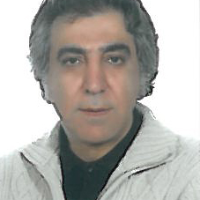The Analysis of Form in Aesthetics as a Type of Sign System
All works of art include the common element of form as one of the most important aesthetic elements. At the same time, all forms and types of art have a variety of expressive forms that convey their semantic content through the media and sensory channels to the audience. In this sense, the aesthetic element of the form in works of art represents the most important features of sign systems. The structure of this element is compatible with Pierce's triple sign structure, namely representation, interpretation, and subject, and the process of forming the sensory experience of form, which is combined with interpretive notions in artwork, can also be formulated by Peirce's concept of abduction. Comparing aesthetic form with linguistic structures, the common expressive features as the double articulation and the information base can be seen as two sign systems shared by both language and art.Form in the artwork has textual and perceptual codes, and can also be analyzed within the framework of Jacques Fontaine's tensive process, an analytical model of the processes of the creation of meaning in the form of modern semiotics. Thus, the four patterns of the tensive process are also visible in the process of aesthetic perception. Analyzing these patterns in sacred architecture, minimal art, gallery art architecture, and the application of music in cinema, we examined the conformity of these patterns. By analyzing all the above-mentioned features presented in the text, it can be concluded that the aesthetic element of the form in works of art is also a type of sign system and can be well analyzed by classical and modern semiotic research methods. It should be pointed out that this research is an analytic-descriptive study.All works of art include the common element of form as one of the most important aesthetic elements. At the same time, all forms and types of art have a variety of expressive forms that convey their semantic content through the media and sensory channels to the audience. In this sense, the aesthetic element of the form in works of art represents the most important features of sign systems. The structure of this element is compatible with Pierce's triple sign structure, namely representation, interpretation, and subject, and the process of forming the sensory experience of form, which is combined with interpretive notions in artwork, can also be formulated by Peirce's concept of abduction. Comparing aesthetic form with linguistic structures, the common expressive features as the double articulation and the information base can be seen as two sign systems shared by both language and art. Form in the artwork has textual and perceptual codes, and can also be analyzed within the framework of Jacques Fontaine's tensive process, an analytical model of the processes of the creation of meaning in the form of modern semiotics.
- حق عضویت دریافتی صرف حمایت از نشریات عضو و نگهداری، تکمیل و توسعه مگیران میشود.
- پرداخت حق اشتراک و دانلود مقالات اجازه بازنشر آن در سایر رسانههای چاپی و دیجیتال را به کاربر نمیدهد.



